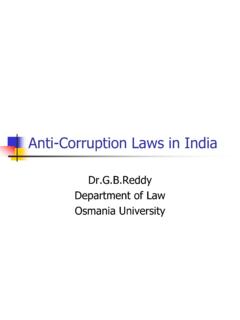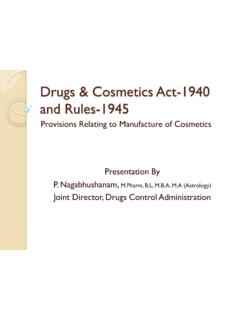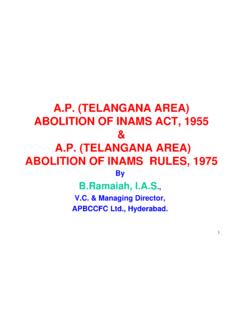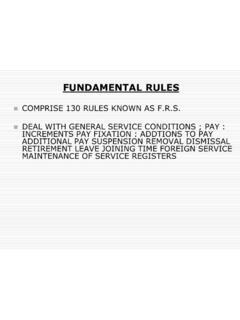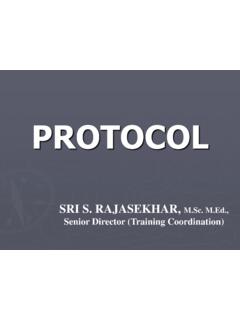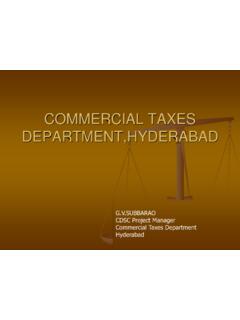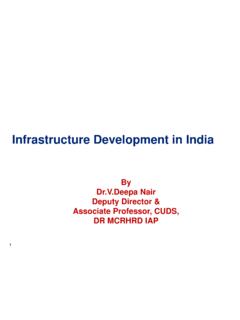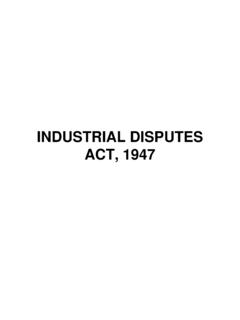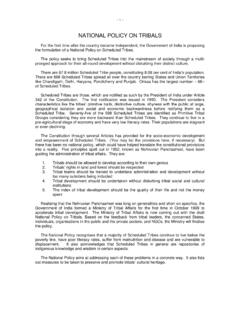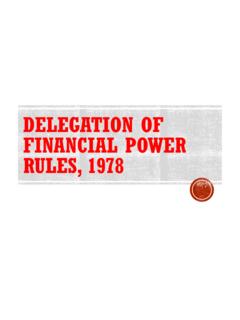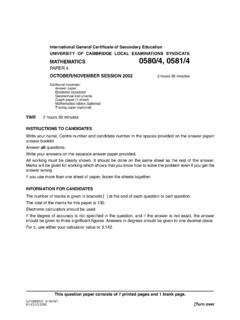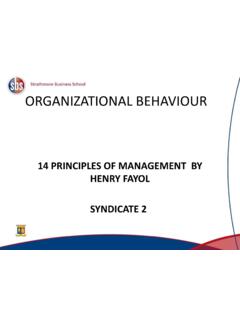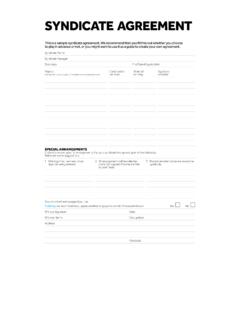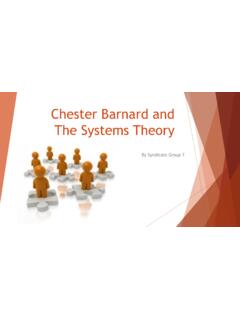Transcription of Evolution of Political Parties in India - MCRHRDI
1 Evolution of Political Parties in India PRESENTED BY SYNDICATE GROUP-11 Introduction CHINNEIVAH HAOKIP Rise of Political Parties in India -pre independence period- SUBODH PRATAP SINGH Political Parties -post independence period 1947-67-MONIKA BHUTUNGURU 1967-89-APEKSHA AGRAWAL 1990 ONWARDS- PRATEEK SINGH regional Parties -rise and role - NEHA SINGH , MUKUND BIHARI ABHINAV PALLAVA A Political party is an organized group of citizens who profess to share the same Political views and who by acting as a Political unit, try to control the government.
2 According to Para 2 (h) of the Election Symbols (Reservation and Allotment) Order 1968, Political party means an association or body of individual citizens of India registered with the Election Commission of India as a Political party under Section 29A of the R. P. Act of 1951. In a democratic state, several Political Parties freely participate in the Political process. The people have the right and freedom to organize their Political Parties . A Political party always works for the promotion of interests of the nation as a whole. A Political party always acts according to the provision of the constitution and rules laid down by laws.
3 One PARTY SYSTEM EXAMPLE:SOVIET UNION,CHINA TWO PARTY SYSTEM EXAMPLE:USA,CANADA,NEW ZEALAND MULTI PARTY SYSTEM EXAMPLE: India ,PAKISTAN The Tenth Schedule of the Constitution added by the Constitution (Fifty-second Amendment) Act, 1985 deals with the disqualification of a person for being a member of either House of Parliament (Art. 102(2)) or the Legislative Assembly or Legislative Council of a State ( (2)), on ground of defection. According to Article 29A (1) and (2) of the R. P. Act, 1951 any association or body of individuals of India calling itself a Political party need to make an application to the Election Commission for its registration as a Political party, within thirty days from the date of its formation along with symbol in accordance with the provisions of Election Symbols (Reservation and Allotment) Order, 1968.
4 NATIONAL Parties 2% seats from 3 different states 6% votes from 4 states+4 seats in lok sabha Recognition in 4 different states STATE Parties 3% of total seats in LA 1 seat in every 25 lok sabha seats in state in that fraction 6% votes +1 lok sabha seat or 2 LA seats 8% of total polled votes There were no National Parties in 1962 and 1967 these were at that time called multi-State Parties . SYMBOLS OF NATIONAL Parties IN India Congress in 1885 by A O Hume Political dialog between educated Indians and British Raj 1919 Congress took shape of a mass movement 1937- Formation of government in Provinces 1946 Formation of interim government Muslim League Shiromani Akali Dal Swaraj Party Communist Party of India Dravidar Kazhagam All India Forward Bloc National Conference After independence was achieved, congress found itself without a unifying purpose.
5 With R. Prasad as president of the country & P. Tandon as president of Congress there was a growing Hindu tint of the party, which led to departure of some of its most effervescent leaders. In 1948 Socialist Party was formed with Narayan & in 1951, KMPP (Kisan Majdoor Praja Party) with Kriplani. These Parties accused congress of betraying its commitment to the poor. They claimed to stand for the ideals of old Gandhian congress. The party also faced external challenges from : Sangh which sought to consolidate India s largest religious grouping, the Hindus into one solid voting bank.
6 Parties even more orthodox than Jana Sangh- Hindu Mahasabha & Ram Rajya Parishad. & its many splinter groups of the left. Parties based on affiliation of ethinicity & religion: Dravida Kazhagam (Tamil pride), Akalis in Punjab, Jharkhand Party demanding separate state for tribals. 1951-52 saw the first general election of India . These were the first ever polls to be held under the new constitution, drawn up with the British parliamentary system as a model. However, the biggest let down of the polls was that about 176 million people were eligible to vote and an abysmally low figure of 15% amongst them were literate.
7 Congress passed the first litmus test of democracy by winning a landslide victory. The party won 364 of the 489 seats in the parliament. Congress, however, suffered some unexpected setbacks in three southern states Tamil Nadu (Madras), Andhra Pradesh (Hyderabad) and Kerala (Travancore) where the party failed to win majority in the face of strong support of the Communist Party. Nehru led Congress to another victory in the 1957 polls. This time North India remained unchallenged for congress as Jana Sangh & socialists were in disarray due to departure of their charismatic leaders.
8 Rest of the country the challenges had increased multifold with: Gantantra Parishad in Orissa, Bombay, DMK in Tamil Nadu & CPI in Kerala gaining strength. It was the first time a Communist party anywhere in the world won a democratic mandate. Shortly before his death Ambedkar decided to float a new party- the Republic party of India . Second Elections The picture changed radically in 1967 elections. Of the 16 states, only eight returned Congress to power with absolute majorities in the state legislatures. Regional Grievances The general slump in the popularity of the Congress had been accentuated in different regions by regional grievances.
9 In Madras, the main issue that swept the Dravida Munnetra Khazagam to power was fear of the imposition of Hindi as the sole official language of India . In Punjab, the fall in Congress stock was largely due to squabbles attending the partition of the two states. In Uttar Pradesh and Delhi, the Jan Sangh gathered a large number of votes through its agitation against cow slaughter Despite these regional issues and mounting popular disenchantment with its rule, Congress would not have fared as badly as it did had its own house been in order. Twenty years of uninterrupted enjoyment of power had made it smug and arrogant.
10 One reflection of this could be seen in their uncompromising attitude towards the dissidents inside their party, the continued and relentless exclusion of the latter from all position of authority. The bitter infighting that followed this led to large-scale expulsions and resignations and in West Bengal, Orissa and Bihar ex-Congressmen formed Parties which contested the official Congress in the elections. In other states, where no such extreme development took place, Congressmen often allied secretly with opposition candidates to defeat candidates belonging to rival factions of their own party.
